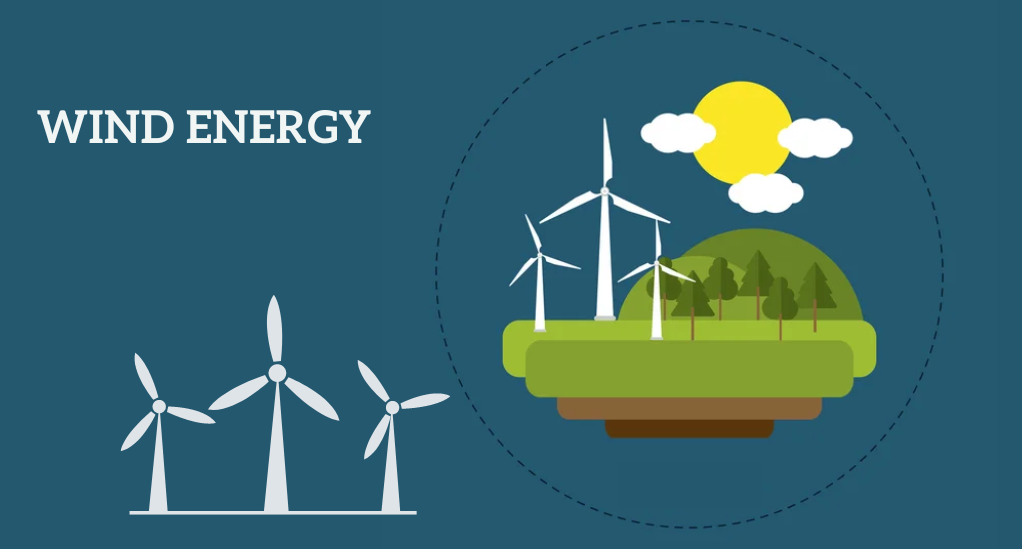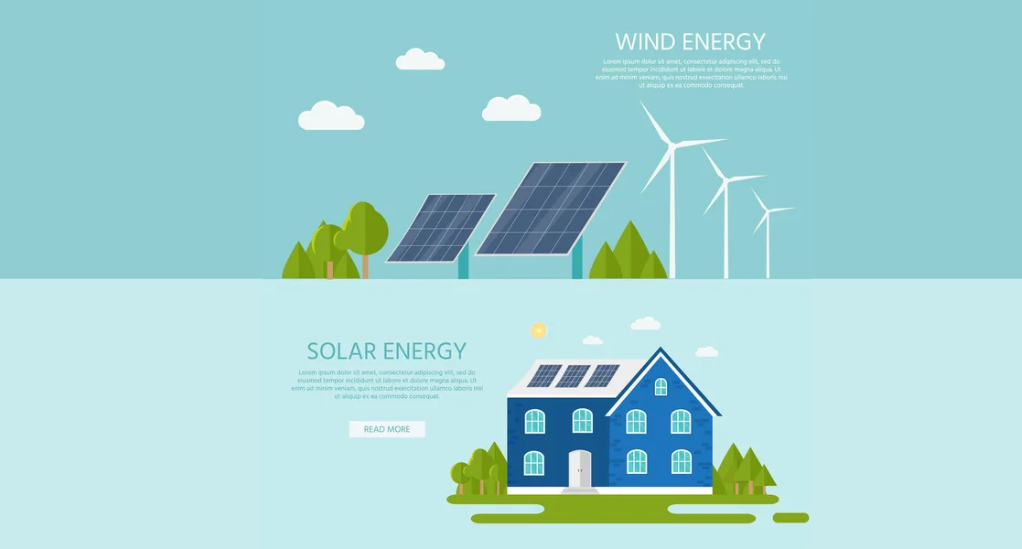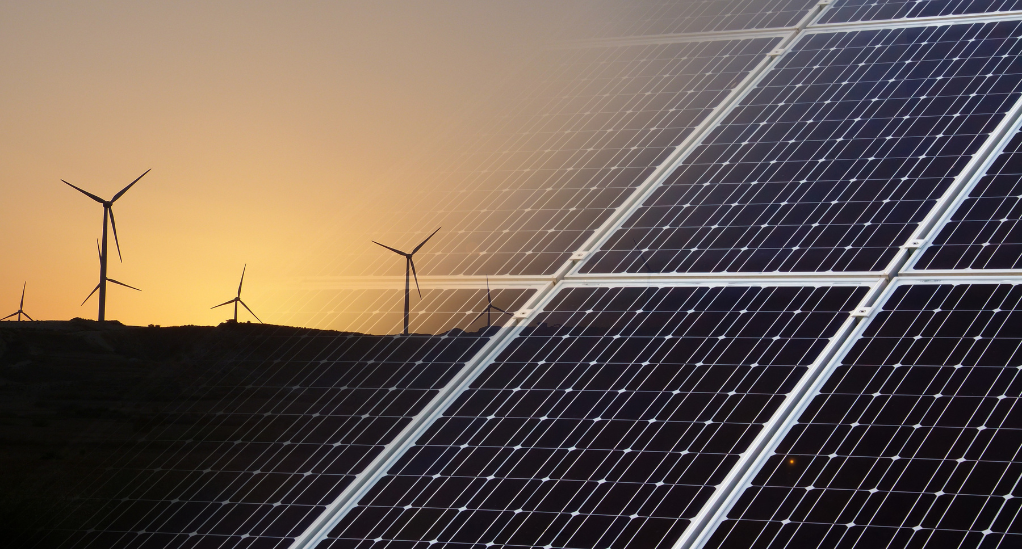In the contemporary era, the global community is standing at a pivotal juncture where the transition from fossil fuels to renewable energy sources is not just a matter of environmental conservation, but a pressing necessity. The relentless pursuit of sustainable energy solutions has brought two formidable contenders to the forefront: solar and wind energy. As we venture further into the 21st century, the role of these renewable energy sources in shaping a green and sustainable future cannot be overstated. In this article, we embark on a journey to explore the intricacies of solar and wind energy, dissecting their strengths, analyzing their challenges, and envisioning a future where these energy sources are the linchpins of global energy supply.
The Current Energy Landscape
Before we delve deep into the realms of solar and wind energy, it is imperative to understand the current energy landscape. The global energy sector is in the midst of a transformative phase, gradually shifting from fossil-fuel dominated sources to cleaner, renewable alternatives. This transition is fueled by a growing awareness of the adverse environmental impacts of fossil fuels, coupled with the technological advancements that have made renewable energy sources more accessible and affordable.
The Importance of Renewable Energy Sources
The transition to renewable energy sources is not just a strategy to mitigate the adverse effects of climate change, but a pathway to foster economic growth, enhance energy security, and promote social equity. Renewable energy sources, being inexhaustible and clean, offer a sustainable solution to meet the growing global energy demand without compromising the health of our planet.
Benefits of Transitioning to Renewable Energy
- Environmental Conservation: Reduced greenhouse gas emissions and lesser dependence on non-renewable resources.
- Economic Growth: Creation of new job opportunities in the renewable energy sector.
- Energy Security: Reduced dependence on imported oil and natural gas, fostering energy independence.
- Social Equity: Promoting access to clean and affordable energy for all, reducing energy poverty.
Introducing Solar and Wind Energy
As we set the stage to explore the potentials of solar and wind energy, it is essential to introduce these formidable contenders in the renewable energy sector. Both solar and wind energy harness the power of nature to generate electricity, albeit through different mechanisms.
Solar Energy
Solar energy utilizes the power of the sun to generate electricity. This is achieved through photovoltaic (PV) panels that convert sunlight into electrical energy or through mirrors that concentrate solar radiation to produce steam, which then drives turbines to generate electricity.
Wind Energy
Wind energy, on the other hand, captures the kinetic energy of the wind to produce electricity. Wind turbines, with their rotating blades, convert the wind’s force into mechanical power, which is then transformed into electrical energy.
Solar Energy: Harnessing the Power of the Sun

In the quest for sustainable energy solutions, solar energy emerges as a beacon of hope, promising a future where clean, renewable energy is not just a possibility but a reality. As we venture into the world of solar energy, we will explore its workings, the advancements that have propelled it to the forefront of renewable energy sources, and the challenges it faces in becoming a dominant force in the global energy landscape.
Understanding Solar Energy
Solar energy, the radiant energy emitted by the sun, has been harnessed by humans for centuries, albeit in different forms. Today, the technology has evolved to a point where we can convert this abundant source of energy into electricity, powering homes, industries, and potentially, our future. Here, we dissect the mechanisms that make this possible.
- Photovoltaic (PV) Panels
Photovoltaic panels, commonly known as solar panels, are devices that convert sunlight directly into electricity. These panels are composed of many solar cells made of semiconductor materials, usually silicon. When photons from the sun hit the solar cells, they knock electrons loose from their atoms, creating a flow of electricity.
- Concentrated Solar Power (CSP)
In contrast to PV panels, Concentrated Solar Power (CSP) systems use mirrors or lenses to focus a large area of sunlight onto a small area. The concentrated light is used as a heat source for a conventional power plant. A wide variety of concentrating technologies exists, including parabolic troughs, dish Stirling engines, and solar power towers.
Benefits of Solar Energy
Harnessing solar energy offers a myriad of benefits, making it a vital player in the transition to a sustainable energy future. Here, we explore some of the key advantages.
Environmental Benefits
- Reduced Carbon Footprint: Solar energy is a green, renewable energy source that does not release any harmful carbon dioxide or other pollutants. A typical residential solar PV system could save many tons of carbon dioxide being emitted into the atmosphere over its lifetime.
- Conservation of Resources: Utilizing solar energy reduces our dependence on non-renewable resources, conserving them for future generations.
Economic Benefits
- Cost-Efficiency: After the initial investment, the cost of generating solar power is extremely low compared to conventional power sources.
- Job Creation: The solar industry has been a key job creator globally, offering opportunities in manufacturing, installation, maintenance, and more.
Challenges and Limitations
Despite its numerous benefits, solar energy faces several challenges that need to be addressed to fully realize its potential.
- Intermittency Issues
Solar energy generation is dependent on weather conditions and daylight hours, making it an intermittent energy source. This necessitates the development of efficient energy storage solutions to ensure a steady power supply. - High Initial Costs
The initial costs for setting up solar power systems can be high, including the costs of solar panels and installation. However, these costs have been decreasing steadily over the years, making solar energy more accessible. - Space Requirements
Solar power plants require large areas to install solar panels, which can be a limitation in densely
populated areas.
Wind Energy: Capturing the Wind’s Force

In the renewable energy spectrum, wind energy stands as a formidable force, harnessing the kinetic energy of wind to generate electricity. This section delves deep into the world of wind energy, exploring its mechanisms, the advancements that have propelled it to prominence, and the hurdles it needs to overcome to cement its place in the global energy matrix.
Understanding Wind Energy
Wind energy, one of the oldest forms of energy harnessed by humans, has undergone a significant evolution. From powering sailboats to grinding grains in windmills, the wind has been a valuable resource. Today, wind energy is harnessed at a much larger scale to generate electricity. Let’s explore the technologies that make this possible.
How Wind Turbines Work
Wind turbines are the primary technology for harnessing wind energy. These structures capture the wind’s kinetic energy and convert it into mechanical energy, which is then transformed into electrical energy. Here’s a step-by-step breakdown of the process:
- Wind Capture: The wind turns the turbine’s blades, which are connected to a rotor.
- Conversion to Mechanical Energy: The rotor is connected to the main shaft, which spins a generator to create electricity.
- Electricity Generation: The electricity generated is transmitted through power lines and distributed to homes, businesses, and industries.
Types of Wind Turbines
Wind turbines come in various types and sizes, catering to different needs and environments. The primary categories are:
- Horizontal-Axis Wind Turbines (HAWTs): These are the most common type of wind turbines, with blades that rotate about a horizontal axis.
- Vertical-Axis Wind Turbines (VAWTs): These turbines have blades that rotate about a vertical axis, offering advantages in certain environments and applications.
Benefits of Wind Energy
Harnessing wind energy offers a plethora of benefits, positioning it as a vital player in the global transition to renewable energy sources. Here, we explore some of the key advantages.
Environmental Benefits
- Zero Emissions: Wind energy is a clean energy source that does not emit greenhouse gases or pollutants during operation, helping to mitigate climate change and protect the environment.
- Water Conservation: Unlike many conventional power generation methods, wind energy does not consume water, preserving this precious resource.
Economic Benefits
- Cost-Effectiveness: Over the years, advancements in technology have significantly reduced the cost of wind energy, making it a competitive alternative to fossil fuels.
- Job Creation: The wind energy sector has created numerous jobs in manufacturing, installation, maintenance, and other areas, contributing to economic growth.
Challenges and Limitations
Despite its numerous advantages, wind energy faces several challenges that need to be addressed to unlock its full potential.
- Variability and Intermittency
Similar to solar energy, wind energy is subject to variability and intermittency, as wind speeds can fluctuate, affecting power generation. This necessitates the development of robust energy storage solutions and grid management systems. - Land Use and Environmental Concerns
Wind farms require substantial land areas, which can sometimes conflict with other land uses. Additionally, there are concerns regarding the impact of wind turbines on bird and bat populations, requiring careful planning and mitigation strategies. - Community Acceptance
Wind energy projects sometimes face opposition from communities due to concerns about noise, aesthetics, and potential impacts on property values. Engaging communities in the planning process and addressing their concerns is vital for the successful implementation of wind energy projects.
It is clear that it holds a pivotal role in shaping a sustainable energy future. While challenges exist, the ongoing advancements in technology and a global commitment to renewable energy sources paint a promising trajectory for the growth and integration of wind energy into the global energy matrix.
Solar Energy Vs Wind Energy: A Comparative Analysis

In the renewable energy domain, solar and wind energy emerge as two powerhouses, each with its unique set of characteristics, benefits, and challenges. As we venture further, we aim to provide a comprehensive analysis that juxtaposes these two energy sources, offering insights into their efficiencies, environmental impacts, and the costs associated with their implementation. This comparative analysis seeks to provide a well-rounded perspective, aiding stakeholders in making informed decisions in the renewable energy sector.
Efficiency and Sustainability
When evaluating renewable energy sources, efficiency and sustainability are critical factors to consider. Here, we compare solar and wind energy based on these parameters.
Solar Energy
- Efficiency: Solar panels generally have an efficiency range of 15-22%, depending on the technology used. This refers to the proportion of sunlight that can be converted into usable electrical energy.
- Sustainability: Solar energy is a sustainable choice as it relies on the sun, an inexhaustible energy source. However, the production of solar panels involves the use of certain non-renewable resources.
Wind Energy
- Efficiency: Wind turbines can convert nearly 45-50% of the wind’s kinetic energy into electrical energy, making them relatively efficient machines.
- Sustainability: Wind energy is a sustainable option, harnessing the natural wind flows without depleting any resources or causing environmental degradation.
Environmental Impact
Both solar and wind energy are touted for their environmental benefits. However, they also have certain environmental impacts that need to be considered.
Solar Energy
- Carbon Footprint: Solar energy systems have a low carbon footprint during operation. However, the manufacturing process of solar panels involves greenhouse gas emissions, which are relatively low compared to fossil fuel-based energy sources.
- Land Use: Solar farms require significant land areas, which can sometimes lead to habitat loss and land-use conflicts.
Wind Energy
- Carbon Footprint: Wind energy systems have a negligible carbon footprint during operation, contributing significantly to climate change mitigation.
- Wildlife Impact: Wind turbines can have adverse impacts on bird and bat populations, necessitating careful planning and mitigation strategies to minimize these effects.
Installation and Maintenance Costs
The costs associated with the installation and maintenance of solar and wind energy systems are vital factors influencing their adoption.
Solar Energy
- Installation Costs: The costs of installing solar systems have been decreasing steadily, making solar energy an increasingly affordable option.
- Maintenance Costs: Solar systems require relatively low maintenance, primarily involving regular cleaning and occasional component replacements.
Wind Energy
- Installation Costs: The installation costs for wind energy systems can vary depending on the scale and location of the project. However, technological advancements have led to a reduction in costs over the years.
- Maintenance Costs: Wind turbines require regular maintenance to ensure optimal performance, involving component inspections and replacements.
It is evident that both solar and wind energy hold immense potential in shaping a sustainable energy future. While each has its set of challenges, their benefits far outweigh the drawbacks, positioning them as viable alternatives to conventional energy sources. Through concerted efforts and technological advancements, it is possible to overcome the challenges and pave the way for a future where solar and wind energy are the mainstays of the global energy landscape.
Future Prospects: Innovations and Developments
As we stand on the cusp of a renewable energy revolution, the future holds immense promise. Innovations and developments in the solar and wind energy sectors are accelerating at a rapid pace, paving the way for a sustainable energy landscape that is not only cleaner but also more efficient and accessible. In this section, we explore the frontier technologies and trends that are set to shape the future of solar and wind energy.
Emerging Technologies in Solar Energy
1. Perovskite Solar Cells
Perovskite solar cells are a new class of solar cells that have shown potential for high efficiency and low production costs. These cells are known for their excellent light absorption properties, promising a significant leap in solar energy technology.
2. Floating Solar Farms
Floating solar farms, also known as floatovoltaics, are solar arrays installed on bodies of water. This innovative approach not only conserves land space but also benefits from the cooling effects of water, enhancing the efficiency of solar panels.
3. Solar-Powered Hydrogen Production
The integration of solar energy with hydrogen production technologies offers a pathway to store solar energy in the form of hydrogen, a clean and versatile energy carrier. This approach holds promise for addressing the intermittency issues associated with solar energy.
Emerging Technologies in Wind Energy
1. Floating Offshore Wind Farms
Floating offshore wind farms are a novel approach to harnessing wind energy in deep waters where traditional bottom-fixed structures are not feasible. This technology expands the potential for wind energy generation to new regions, tapping into the vast wind resources available offshore.
2. Airborne Wind Energy Systems
Airborne wind energy systems utilize kites, drones, or aerostats to capture wind energy at higher altitudes where wind speeds are more consistent and stronger. These systems promise to revolutionize wind energy generation, offering higher efficiencies and reduced infrastructure costs.
3. Smart Wind Turbines
The development of smart wind turbines equipped with sensors and advanced control systems allows for optimized performance and predictive maintenance, enhancing the efficiency and reliability of wind energy systems.
Through collaborative efforts, research, and development, and a global commitment to a greener future, the prospects for solar and wind energy are brighter than ever. As we look forward to a future powered by renewable energy, it is clear that solar and wind energy will play a pivotal role in shaping a sustainable, prosperous, and environmentally friendly world.
Conclusion
In the face of escalating environmental challenges and a burgeoning global energy demand, the significance of renewable energy sources cannot be overstated. Solar and wind energy emerge as powerful contenders in spearheading a transition towards a sustainable energy future. These renewable sources not only promise to mitigate greenhouse gas emissions but also foster economic growth and enhance energy security. As we navigate through the complexities of these energy sources, it becomes evident that they hold the potential to reshape the global energy landscape, offering a cleaner, greener, and more sustainable alternative to conventional energy sources.
As we envision this promising future, it is imperative for policymakers and stakeholders to cultivate an environment that nurtures the growth and integration of solar and wind energy. This involves substantial investment in research and development, fostering innovation, and facilitating technological advancements. Moreover, the development of supportive policies, community engagement, and fostering national and international collaborations stand as vital steps in this journey. As we stand at the threshold of a renewable energy revolution, solar and wind energy hold the promise of shaping a sustainable, prosperous, and environmentally harmonious world.

